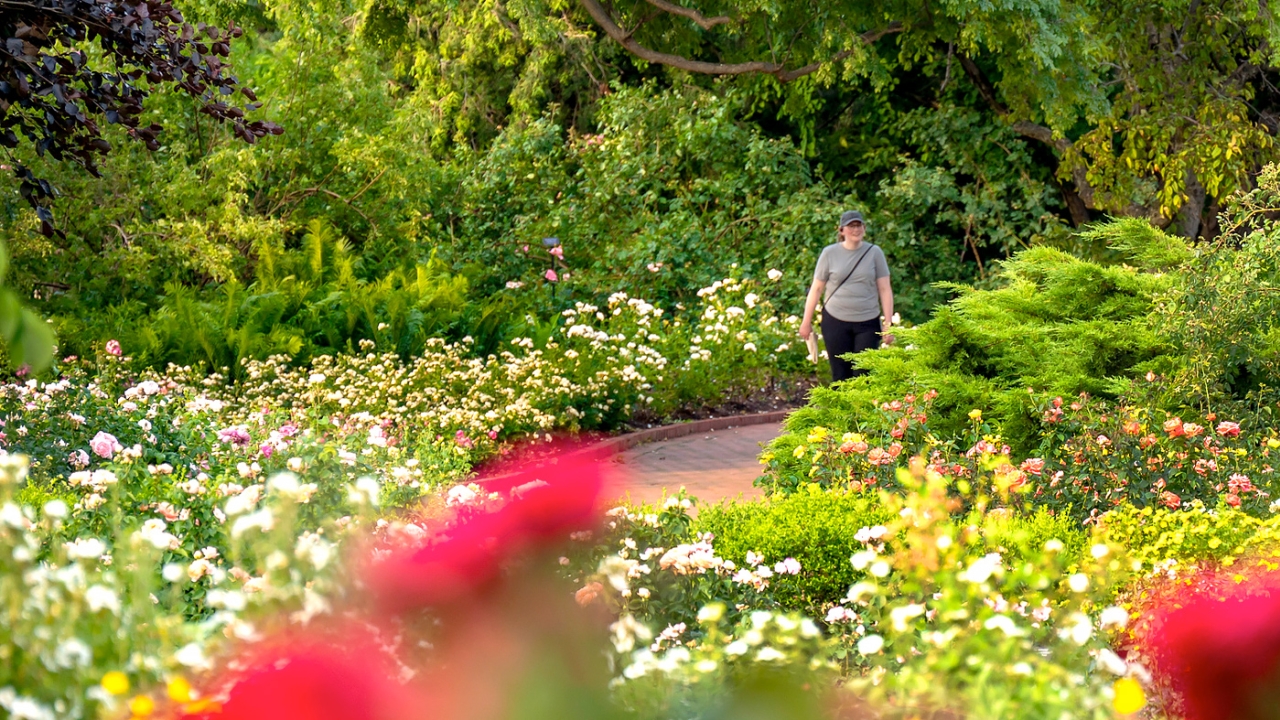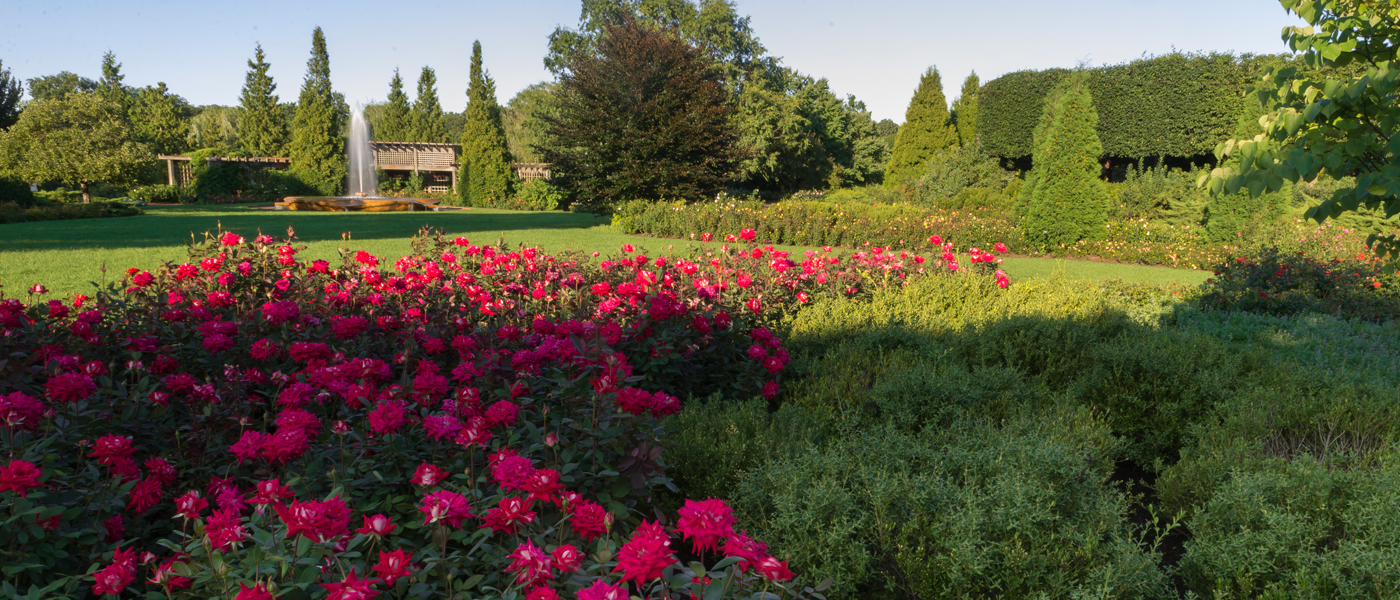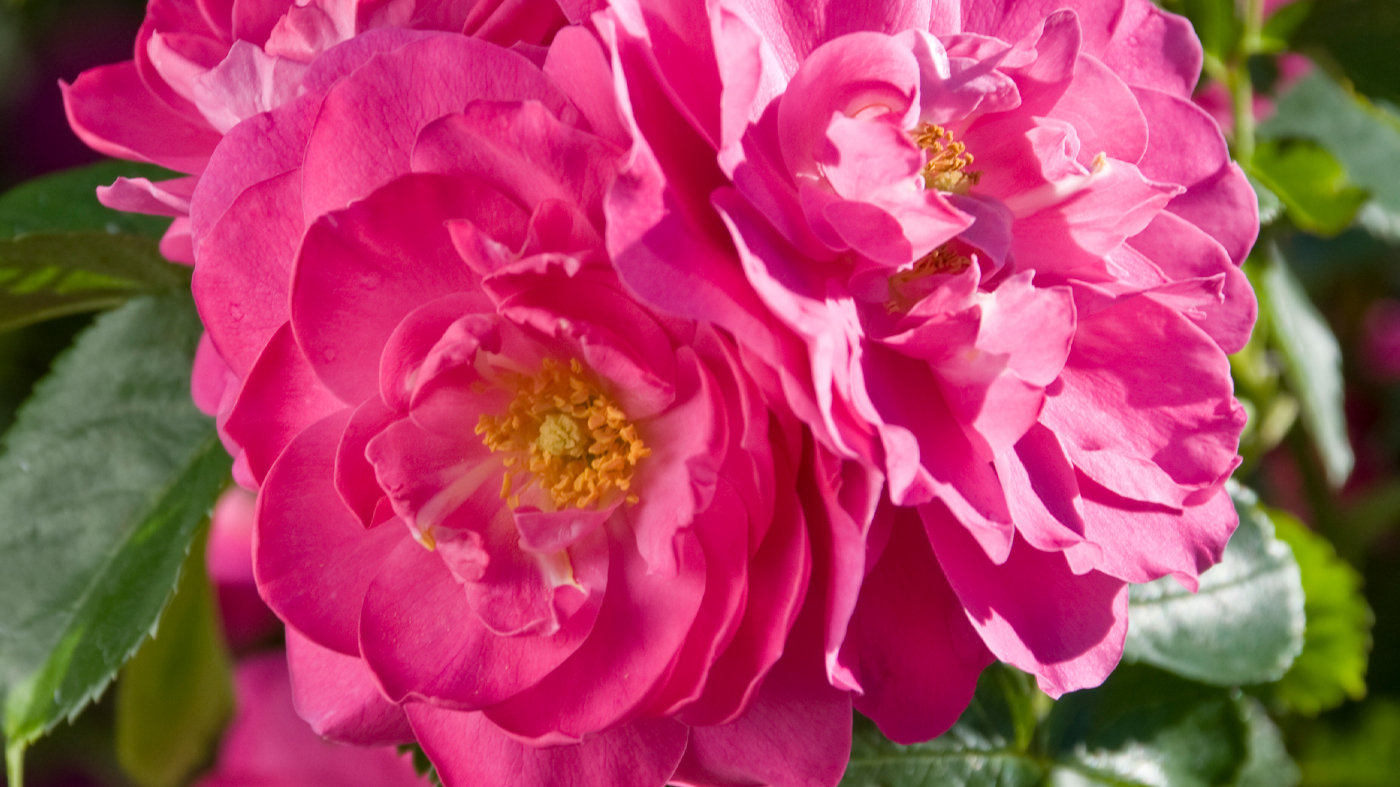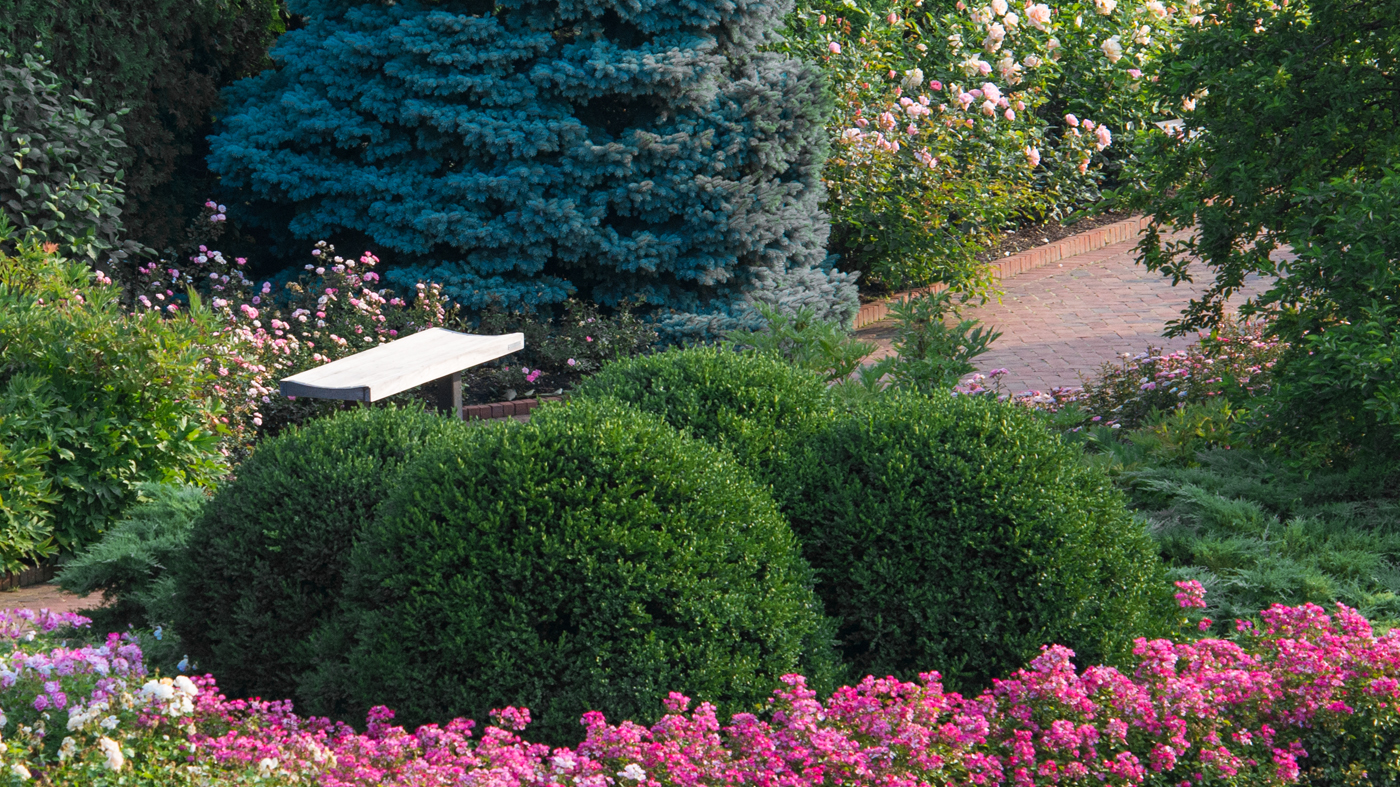

Celebrate the Rose Garden
Explore the Krasberg Rose Garden
One of the great joys in June is the opportunity to stroll leisurely through the Rose Garden, and bear witness to more than 5,000 roses primed for their annual show of shows.


Rosa 'Dainty Bess' hybrid tea rose
Come Celebrate Your Event
June is a month of celebrations — graduations, weddings, long summer days and evenings, and Father’s Day. The Rose Garden is often an integral part of these activities, and has always been a singular destination for out-of-town visitors, for local residents who drop in daily to see what new bud has bloomed overnight, and for gardeners looking for ideas and inspiration for growing the best roses in the Midwest.
A Landscaped Stroll Garden
This beautiful garden is so much more than a collection of individual rosebushes. It is a fully landscaped garden where roses, the most popular of all flowering plants, are showcased to their strongest advantage—not lined up like so many plants on parade, but integrated with companion plantings of soft, sheltering evergreens, ground covers, vines, and perennials, designed to complement the colors of the roses. The garden is a true stroll garden, with winding paths leading visitors in a circular fashion from the dark, richly red-toned roses planted at the entrance to the softer, more pastel plants at the back of the garden.
Companion Plants
While the roses are the star players in this garden, they have superb support from the arborvitae enclosure, the rounded hedges of boxwood, the specimen trees like Chinese red pine, crabapple, lace-bark pine, and Chinese elm. Early flowering shrubs provide color, fragrance, and interest before the roses come into bloom, as well as attract the all-important pollinators to the garden. Look for intoxicatingly scented viburnums and lilacs, plus tree peonies, spireas, and northern bayberries.

Rosa 'John Cabot'

Cupcake miniature rose Rosa 'Spicup'
Characteristics of a Good Rose
As the intricate delicacies of the many varieties of roses draw you in (along with the heady fragrances), take the opportunity to note some of the differences in rose types. The roses in this garden have been selected, not only for their beauty and charm, but for their hardiness, low maintenance, disease and insect resistance, long bloom time, and overall appeal of foliage and plant habit. Some of the rosebushes develop colorful rose hips in late fall when all the flowers are gone, while others produce simply glorious new red foliage in late spring.
Types of Roses
Greeting you as you enter the Rose Garden are two gorgeous grandifloras, fittingly named ‘Hi Neighbor’ and ‘Love’. Grandiflora rosebushes can grow as tall as 5 feet, and produce clusters of large blossoms on long stems throughout the growing season. The queen of the long-stemmed roses, however, is the hybrid tea rose. A few of the popular ones chosen by the horticulturists include Love and Peace™, Ingrid Bergman®, and Opening Night®. Hybrid teas are stunning, and there are few flowers that can compete with them as cut flowers because of their long stems and fascinating buds, but the plants themselves do require the most maintenance of all roses. They must be protected over winter, pruned judiciously to reinvigorate growth, and sprayed to manage insect and disease, especially black spot. That said, many gardeners are still willing to work extra hard for the rewards these beautiful plants afford.
Tiny to Towering
Tiny miniatures like ‘Cupcake’, ‘Gizmo’, ‘Beauty Secret’, and Sun Sprinkles™ provide a study in contrasts to the towering 6- to 7-foot hybrid rugosas ‘Therese Bugnet’ and ‘Monte Casino’. As the garden clearly demonstrates, the rangy rugosas make ideal backdrops or hedges for smaller plants best appreciated up close at the front of the border. In between these extremes are the floribundas, like Singin' in the Rain™ and Pink Iceberg™. Excellent choices for mixed borders or smaller spaces, the floribundas usually remain shorter and squatter, blooming with clusters of flowers on short stems.

Consider Shrub Roses in the Midwest
Shrub or landscape roses are perhaps the best choices for both new and seasoned gardeners who love rose flowers, but are unable to devote the time required to keep the plants happy. Examples of multicolored shrub roses weave throughout the garden; don’t miss ‘Will Scarlet’, ‘Fire Meidiland’, ‘Golden Wings’, and the very popular Bonica®.
Fountains, Arbors, Benches
At the back of the Rose Garden is the Rose Petal Fountain in the shape of an open rose blossom, and a cooling arbor with benches and shady nooks, a perfect spot to sit and cool off, surrounded by shade-loving plants like sweet autumn clematis, ferns, hostas, and hanging baskets of seasonal annuals. Extending a short walk beyond the arbor are examples of heirloom roses, larger damasks, and centifolias, which have given birth to a new generation of “old garden roses.”
June is most certainly the signature month of roses, but every day at the Garden is filled with moments when you must “stop and smell the roses.”

